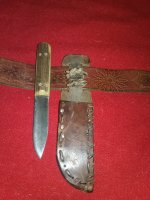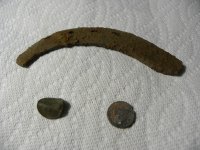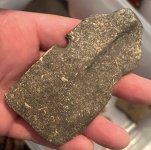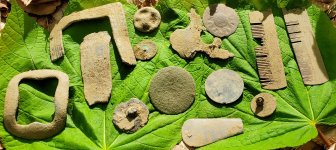oldbattleaxe
Sr. Member
- May 26, 2010
- 394
- 236
It measures 9 1/2" long. Thin tapered edge on both ends. The wood handle is sort of octagon and real light wood. I tried tried get the exact color since my camera made the knife lighter. The blade is sharp. Not sure why is flat at the end? As always, I could use some help from the experts.
Attachments
Last edited:
Upvote
1













